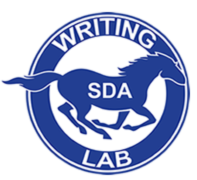Okay, we’re back with another post on sentence structure. This one is going to be a little longer. Let’s see if we’re up for it.
Ready…Set…LEARNSENTENCESTRUCTURE!!!
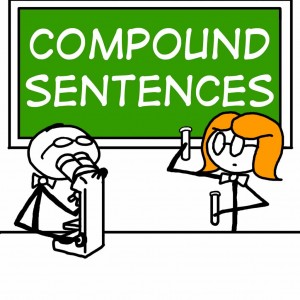
Compound sentences are made when you combine two independent clauses (those simple sentence, subject+verb things from last time). The word ‘compound’ can be defined as meaning “made of two or more parts.” So a compound sentence is made of two simple sentences being joined together. You can combine two simple sentences (or independent clauses–they’re pretty much the same thing at this point) in three different ways.
Way #1- Independent Clause(,) Coordinating Conjunction +Independent Clause(.)
A coordinating conjunction is a word, such as and, but, or, so, for, yet, and nor, that allows you to combine two otherwise separate sentences. That’s it. Those are your seven coordinating conjunctions.
Here are some examples:
I like cake, and I will eat it.
My dog is named Cake, but please don’t eat him.
I don’t normally eat pets, yet my stomach groans for nourishment.
Piece of cake, right?
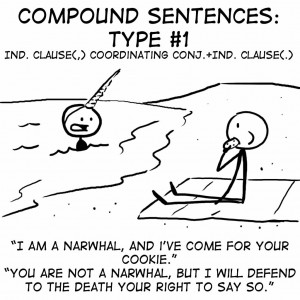
Way #2- Independent Clause(;) Transitional Expression(,) Independent Clause(.)
Transitional expression: These are words like therefore, nevertheless, however, as a result and so on. They show a connection between the first sentence and the next one. There are a bunch of these, and I probably couldn’t think of them all if I had all three-day weekend to do so. Which I don’t. I have stuff to do. But you don’t need to know every single transitional expression to write a proper sentence as long as you get the general idea.
To put the same general idea in another form:
Subject +Verb(semicolon) Transitional Expression(comma) Subject +Verb.
Is this getting technical and boring, or what? Well, if you learn it and can use it properly, I promise we’ll never talk about it again. It will be one of those “it-which-shall-not-be-named” kinds of situations. Let’s look at some examples:
I like cake; therefore, I will eat it.
You sure do like cake; nevertheless, I must forbid you from eating it.
I am a cake-powered robot; however, I can also run on ice cream.
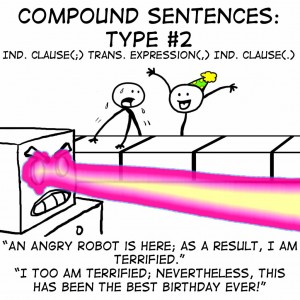
Way #3- Independent Clause (;) Independent Clause(.)
Okay, this one is pretty simple. You just use a semicolon to join two complete sentences that are related instead of using a period to separate them. The semicolon indicates to the reader that the sentence after the semicolon has something to do with the sentence before it. So why are semicolons so difficult to use? Usually, it’s because people use them more than is necessary. Because semicolons aren’t used as much as other types of punctuation, they are more noticeable in a sentence when they are finally used. If you throw a lot of semicolons into a sentence, people will definitely notice; they’ll think it’s weird. They’ll think you’re weird. Don’t be a semicolon weirdo.
Examples:
It must be lunch time; you won’t stop talking about cake.
I don’t think we need another example; one is enough.
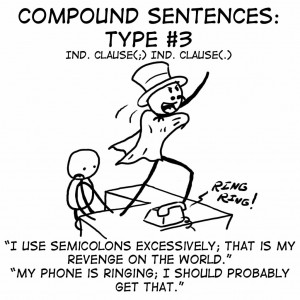
Got it?
To recap, you can combine two simple sentences to make a compound sentences by using one of the following formats:
- Independent Clause(,) Coordinating Conjunction +Independent Clause(.)
- Independent Clause(;) Transitional Expression(,) Independent Clause(.)
- Independent Clause (;) Independent Clause(.)
We’ll follow up this post with the next type of sentence: the Complex Sentence (how exciting, right?) As always, feel free to ask questions in the comments section. We’ll do our best to answer them. (To help prevent spam, all comments must be reviewed by the Lab before they will show up in the comments section, so there’s no need to stress if you send a comment and it doesn’t show up instantly. Please give us a day or two to filter through them, or send us an email at **sdawritinglab(at)gmail.com**)
Thanks for reading!
Your always-grateful SDA Writing Lab
